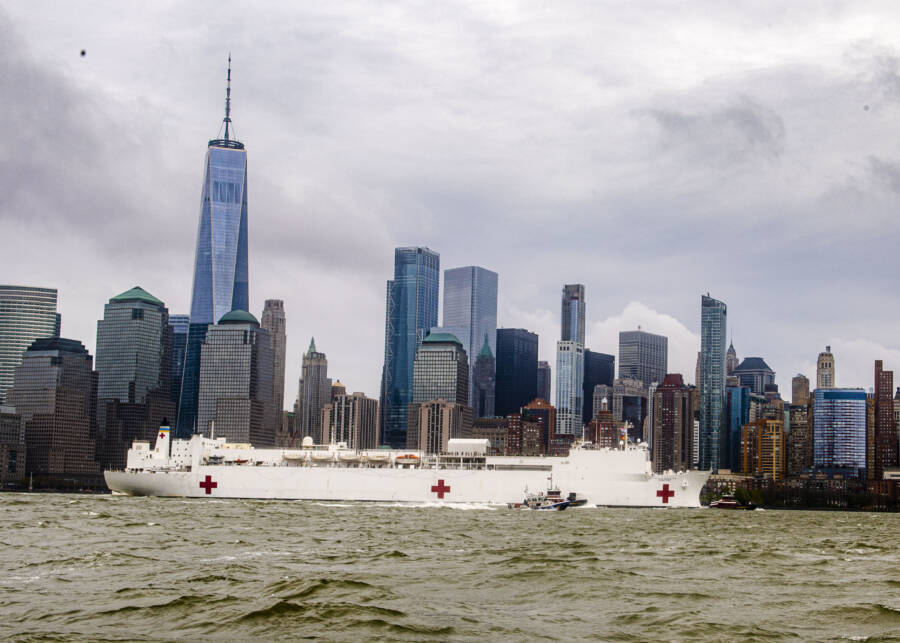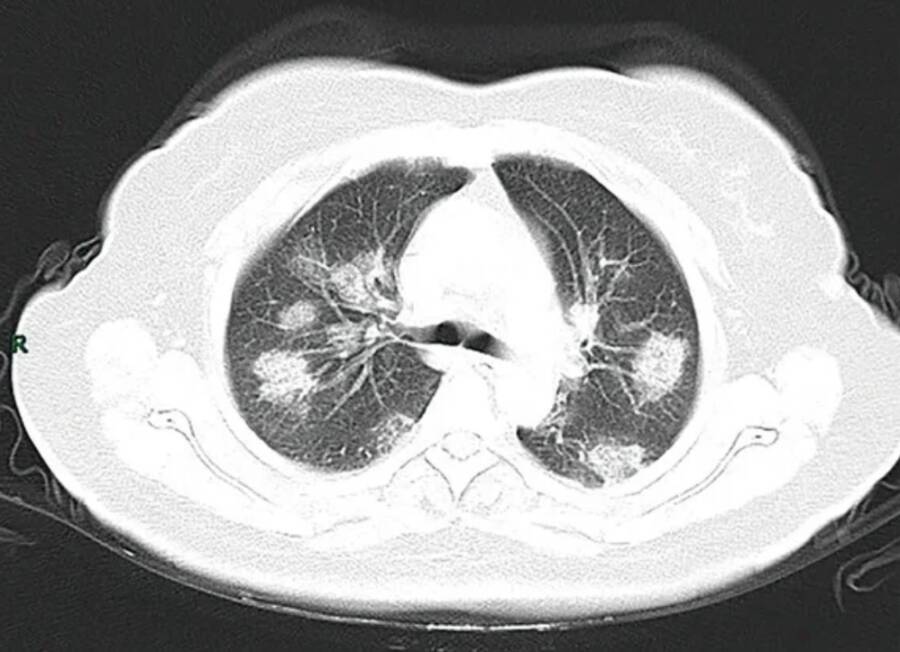The Deadliest Days In The COVID-19 Pandemic

Official U.S. Navy Page/FlickrHospital ship USNS Comfort departing New York City after treating patients there in April 2020.
When doctors diagnosed the first cases of COVID-19 in the United States in January 2020, many believed the novel coronavirus would be contained and have little to no impact on our lives. Instead, its subsequent spread impacted the entire country and led to some of the deadliest days in American history — in rapid succession.
And soon, 2020 slowly revealed itself as one of the most devastating years in recent memory. Millions of people quarantined in their homes in fear for their lives, uncertain of what was to come. Then, in the last few weeks before Christmas, COVID-19 deaths skyrocketed across the country.
The daunting figures showed that the first four days in December marked four of the deadliest days in American history.
On Dec. 1, 2020, there were 2,597 coronavirus deaths. On Dec. 2, there were 2,804. Dec. 3 was the highest to date with 2,879 deaths. On Dec. 4, there were 2,607 coronavirus-related deaths — all higher death tolls than the attack on Pearl Harbor or any single day of the Battle of Gettysburg.

Wikimedia CommonsA CT scan of a patient with COVID-19 and the lesions (bright areas) in their the lungs.
But it was only going to get worse. On Jan. 12, 2021, the deadliest day of the pandemic, 4,400 deaths were reported — more than from any other single event in American history aside from the 1918 Spanish Flu and the 1900 Galveston Hurricane.
Then came February, when an estimated 3,300 people were dying of COVID-19 across the country every single day. For weeks on end that month, the fatalities exceeded the death toll of the Sept. 11 attacks in New York daily.
Yet just like in the aftermath of every other deadly event in American history, people have mourned and adapted.
Following the Galveston Hurricane, the city literally raised itself by several feet in one of America’s most daring feats of engineering. The San Francisco Earthquake led to drastic improvements in shock-absorbent buildings. The AIDS crisis spurred medical advancements in immunotherapy treatment.
Today, masks have become commonplace, vaccine research has led to promising breakthroughs beyond COVID-19, and outdoor dining appears here to stay in some of America’s densest cities. As with all of the deadliest days in American history, those caused by the COVID-19 pandemic will leave their impact for generations to come.
After learning about nine of the deadliest days in American history, read about the deadliest catastrophes in modern history. Then, learn about the 1920 Wall Street bombing.





